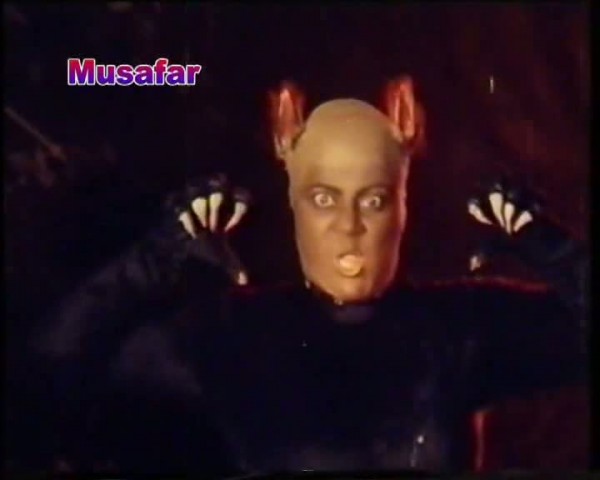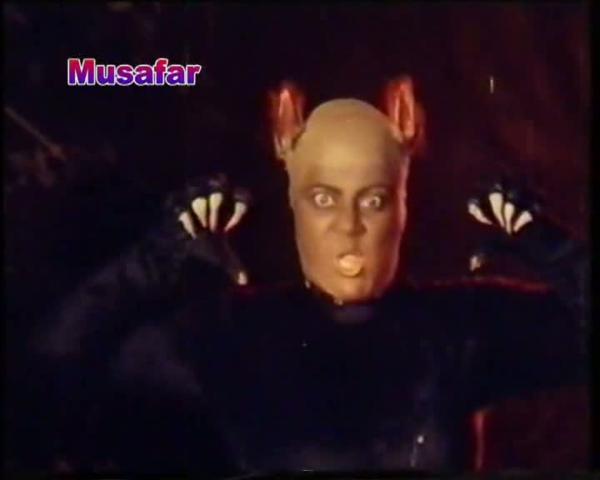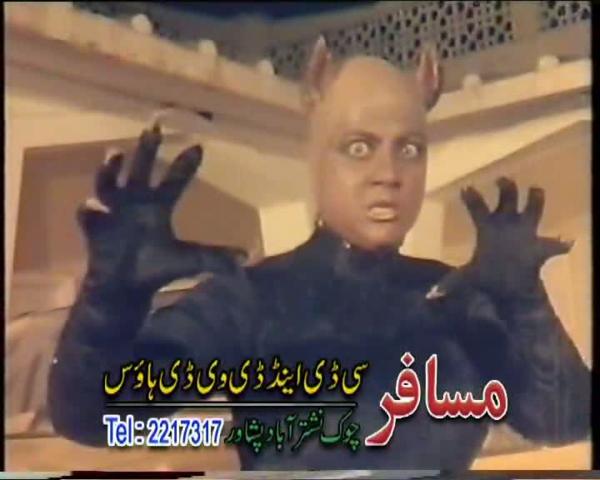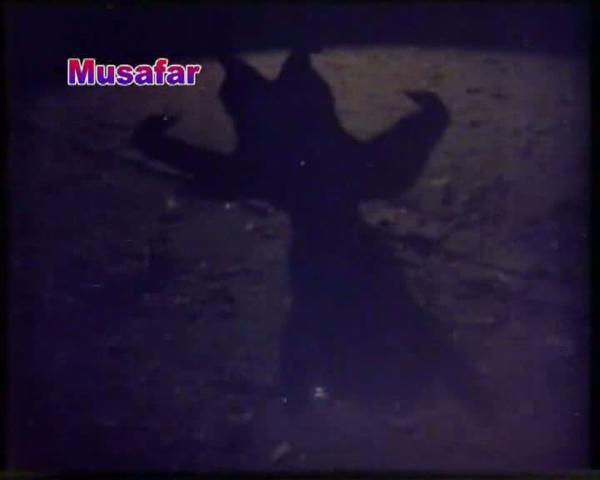
International Gorillay
aka International Guerillas

1990
Written by Nasir Adib
Dialogue by Zahoor Ahmed and Sikandar Khanna
Directed by Jan Mohammed
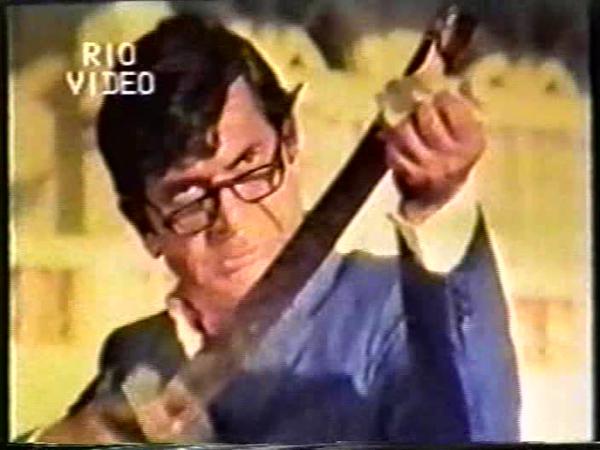 |
|
Salman Rushdie – Evil and OCD sufferer.
|
International Gorillay is the greatest James Bond movie ever made. It’s also an amazing cultural artifact from a time not so long ago with things were very different but also very similar to modern day. The true life story of Salman Rushdie and The Satanic Verses that International Gorillay is a reaction to is by itself something worthy of a movie. But a ridiculous action film warped history tale…that’s something better! First, let’s just ignore the gigantic irony of using Western movie elements to make a film critical of Western culture. Because that’s part of the point, this is simply a cash grab to make money off the latest craze!
 |
|
This, and our amazing collection of Diane Fossey memorabilia!
|
But to understand what the massive anger and protests and political football was that created International Gorillay was, we have to go back to the beginning. The title The Satanic Verses comes from the name given by Western scholars to a story about verses that were replaced in the original telling of the Qur’an.
 |
|
Brain scrambling, divine intervention style!
|
In the old days, the city of Mecca was the usual potpourri of religions, with all sorts of random gods that specialized in various things. At the gates to the city were three shrines to the goddesses Allāt, al-‘Uzzā, and Manāt (each was considered a daughter of God.) Due to the location of these shrines, merchants and traders would routinely stop by one of the shrines and give offerings. Thus the families that controlled each of the three shrines obtained wealth and influence in the city. Muhammad did not belong to any of those families, he grew up as an orphan raised by his uncle, but would marry into a different influential family. What Muhammad did do was retreat into the wilderness to pray, and during one such retreat at the age of 40 in the Cave of Hira, he had his first encounter with the angel Gabriel, who would tell him the scriptures that would eventually become the Qur’an.
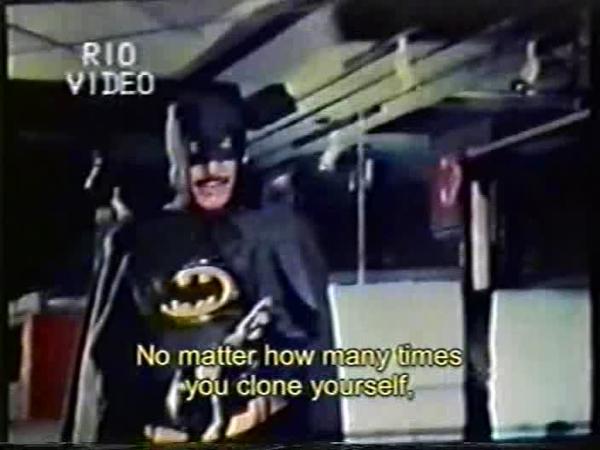 |
|
International Gorillay takes a stand against franchise rebooting!
|
Gabriel would tell Muhammad the verses, who then recited it to his followers to memorize. At this point most of his followers were illiterate. They would begin to learn how to write so they could record parts of scripture on all sorts of objects. Muhammad pushed monotheism, which lead to his followers being persecuted in Mecca by the followers of the various other deities, especially the powerful families that controlled Al-Lat, Al-‘Uzzá, and Manāt. Muhammad continued to add new scriptures over 23 years, and it wasn’t until after Muhammad’s death that the Qur’an was collected into one volume.
During one of these trips, Muhammad told a scripture that spoke praise to Al-Lat, Al-‘Uzzá, and Manāt, and added them to God’s pantheon. His followers rejoiced, and it seemed the persecution would end with the acceptance of the goddesses. But, a little while later, Muhammad returned from another trip with the news that the passage he had recited was not accurate, and instead gave a corrected version that dissed on Al-Lat, Al-‘Uzzá, and Manāt.
 |
|
Flying folding chairs?!?!
|
There are a few stories as to what transpired. One tale is that Muhammad had been tricked, the prior visit from the angel Gabriel hadn’t been from Gabriel, but from the Devil in disguise, who had planted untrue scripture in a test of temptation much like Jesus went through. Another theory is that Muhammad was tempted to end the persecution of his people by accepting the three goddesses into the Muslim pantheon, but later decided against it/was chastised by Gabriel. Other scholars say that it wasn’t Muhammad that was mistaken, but some of his Meccan followers who changed the verses to try to ease their persecution. Due to how the Qur’an was compiled, the original version of the text was never included in a collected volume, and even the story does not exist in the original work, but is found in outside sources (relatively contemporary biographies of Muhammad.) The term “Satanic Verses” is a Western invention, coined by Sir William Muir in 1858 and were considered a minor debate in the religion. The “satanic” verses in question were in Surat An-Najm [53:19-20]:
Have ye thought upon Al-Lat and Al-‘Uzzá
and Manāt, the third, the other?
These are the exalted gharāniq, whose intercession is hoped for.
And are replaced by this accepted version at [53:19-23].
Have ye thought upon Al-Lat and Al-‘Uzza
And Manat, the third, the other?
Are yours the males and His the females?
That indeed were an unfair division!
They are not but [mere] names you have named them – you and your forefathers – for which Allah has sent down no authority. They follow not except assumption and what [their] souls desire, and there has already come to them from their Lord guidance.
 |
|
This version of Multiplicity sucks.
|
The whole thing would be relatively unknown today had a young Salman Rushdie not heard of the tale and years later decided it would make a good title for a book. Rushdie began work in 1984 on what would be his fourth novel. Having grown up in a Muslim family in India, most of Rushdie’s work is set in the Indian subcontinent region.
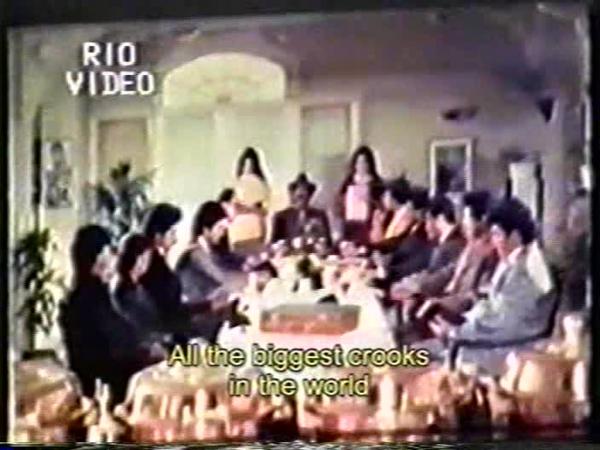 |
|
Bankers?
|
Continue reading →
